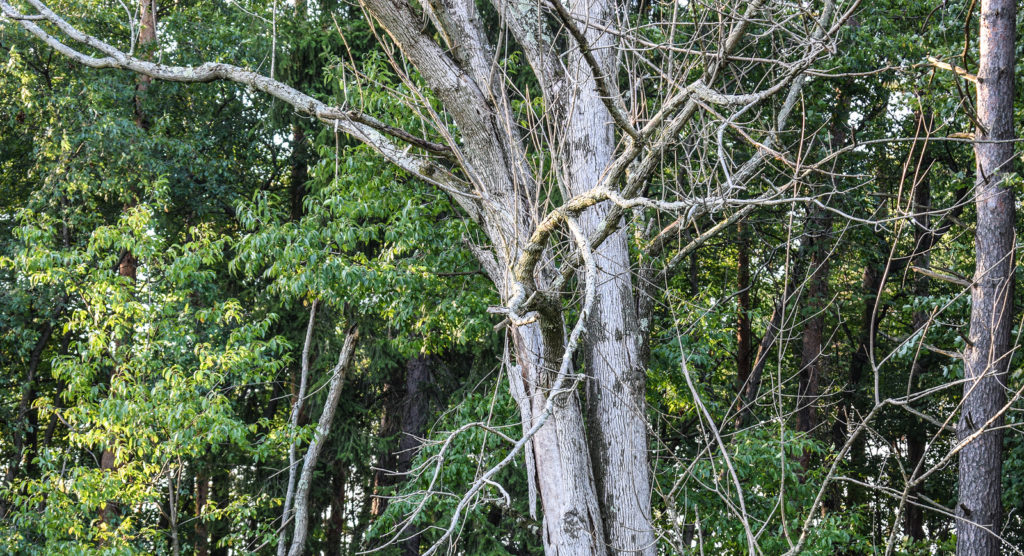Ash trees are a staple of Indiana’s landscape, recognized for their beauty and environmental benefits. However, they face a significant threat from the emerald ash borer (EAB), an invasive pest that has devastated ash populations across the state. Proper care and preventative measures are essential if you’re an Indiana homeowner, landowner, or property manager looking to protect ash trees on your property.
This guide will explore how to care for your ash trees, identify the signs of trouble, and take action to preserve these vital members of Indiana’s ecosystem.

Introduction to Ash Trees in Indiana
Why Ash Trees Matter
Ash trees are an integral part of Indiana’s ecosystem, providing shade, improving air quality, and supporting local wildlife like birds and insects. Their strong wood is also valued for furniture and tool-making, making their preservation even more crucial.
The Emerald Ash Borer Threat
The emerald ash borer (EAB) is an invasive beetle that has caused widespread destruction of ash trees across North America since its discovery in the U.S. in 2002. These pests kill trees by burrowing beneath the bark, disrupting the tree’s nutrient flow. Without intervention, EAB infestation nearly always results in the tree’s death.
Identifying Ash Trees
Correctly identifying ash trees is vital for effective care, as improper identification can lead to incorrect treatments or overlooking warning signs.
Key Characteristics of Ash Trees
- Leaves: Compound leaves, with 5-11 leaflets per stem, typically arranged in an opposite pattern.
- Bark: Young trees have smooth bark, while mature trees develop diamond-shaped ridges.
- Branching: Opposite branching is a signature trait of ash trees.
How to Differentiate Ash Trees from Look-Alikes
Ash trees are often confused with black walnut or boxelder trees. Focus on traits like opposite branching and the specific structure of their leaves to make an accurate identification.
Not sure if your tree is an ash? Consult a professional tree care company for confirmation.
Essential Care Tips for Ash Trees
Healthy ash trees are more likely to withstand pests, diseases, and environmental stress. Follow these foundational care practices to keep your trees thriving:
1. Watering and Fertilization Guidelines
Watering:
- Trees need about 1-2 inches of water per week.
- Water deeply, especially during dry spells, to prevent drought stress.
Fertilization:
- Conduct a soil test to identify nutrient deficiencies.
- Apply slow-release fertilizer in the early spring or fall to promote steady growth without overloading the tree.
2. Pruning Techniques and Timing
Regular pruning enhances tree structure and removes dead or diseased branches:
- Best time to prune ash trees is late winter or early spring, before new growth starts.
- Avoid excessive pruning, as this weakens the tree and creates entry points for pests like EAB.
3. Mulching for Soil Health
- Apply a 2-3 inch layer of organic mulch around the base of the tree, but avoid piling it against the trunk (“volcano mulching”).
- Mulch helps retain soil moisture, regulate temperature, and suppress weed growth.
Contact Us for Ash Tree Maintenance
Protecting Ash Trees from the Emerald Ash Borer
The emerald ash borer poses the most significant challenge for ash tree care in Indiana. Here’s how to protect your trees:
Signs of EAB Infestation
- Thinning Canopy: A thinning or dying canopy is often one of the first signs of infestation.
- Epicormic Shoots: New shoots growing from the tree’s trunk or base indicate stress.
- “D”-Shaped Holes: EAB adults leave small, D-shaped exit holes in the bark.
- S-Shaped Galleries: Beneath the bark, larvae create S-shaped tunnels that disrupt nutrient flow.
Preventative Treatments
Systemic Insecticides:
- Soil drenches, trunk injections, or bark sprays are effective against EAB larvae.
- Common active ingredients include emamectin benzoate, azadirachtin, and imidacloprid.
Timing Treatments:
- The best time for applications is late spring or early summer, aligning with the EAB lifecycle.
Consider Professional Help
Due to the complexity of applying EAB treatments, hiring a certified arborist is strongly recommended. Arborists can:
- Accurately assess the infestation and recommend the best treatment.
- Use safe and effective methods compliant with Indiana regulations (e.g., avoiding insecticide use near waterways).
When to Remove Infested Trees
Severely infested or dying trees may need to be professionally removed to prevent the further spread of EAB. Tree removal should always be a last resort and should follow Indiana DNR guidelines.
Frequently Asked Questions (FAQ)
How do I keep my ash tree healthy?
Water regularly, fertilize as needed, mulch for soil health, and prune during the appropriate season. Regularly monitor your tree for signs of pests or disease.
What time of year should you treat ash trees?
Preventative treatments for EAB are most effective in late spring or early summer.
What are the disadvantages of an ash tree?
Ash trees are highly susceptible to EAB infestations. They also require consistent maintenance and monitoring to stay healthy.
Why are all my ash trees dying?
EAB is the most likely culprit. Examine your trees for signs of infestation, such as thinning canopies, epicormic shoots, or D-shaped exit holes.
Can I plant alternatives to ash trees in Indiana?
Yes! Consider native tree species like oak, hickory, or serviceberry for planting. These trees offer similar ecological benefits and are less susceptible to pests like EAB.
Preserving Indiana’s Ash Trees for Generations
Ash trees are a vital part of Indiana’s natural heritage, but protecting them from threats like EAB requires proactive care. From proper watering and pruning to timely treatments and professional support, every action you take contributes to the health of your trees and the sustainability of your environment.
If you need help with routine tree service or tree removal, our certified specialists are here to guide you every step of the way. Contact Timberland Tree Care today to protect your trees and your property.
Related Post: Indications of an Emerald Ash Borer Tree Infestation


